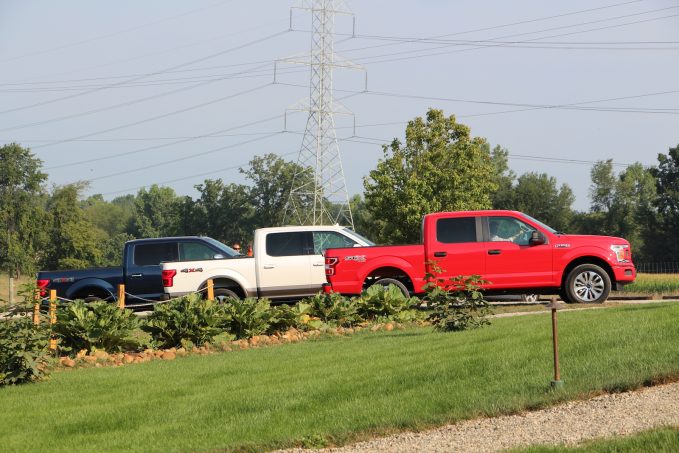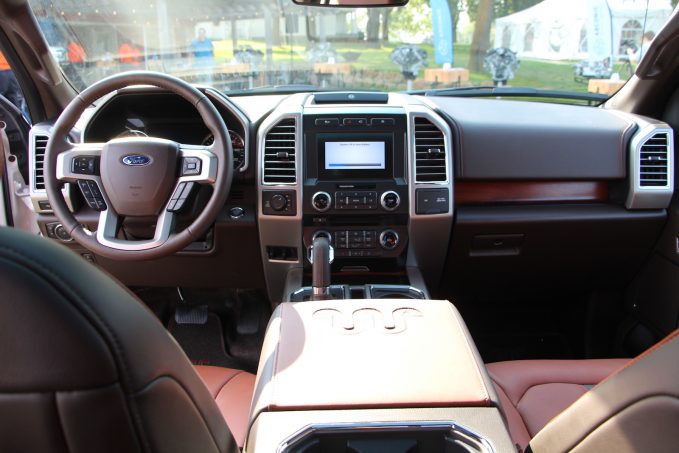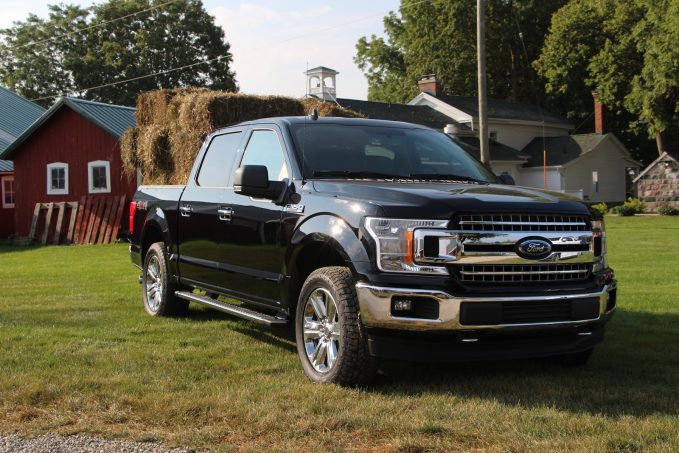Ford’s run of truck sales dominance can surely be attributed to many things, but one of the biggest is that Ford is constantly working to improve its truck, with updates and new models with legitimate engineering changes coming often, not just paint and plastic packages to keep the truck looking fresh.
Case in point: Over the 2017 and 2018 model years, the F-150’s engine line up has been completely overhauled, with all four available powerplants getting more power and a new 10-speed transmission. It started with the big 3.5-liter EcoBoost for the ’17 model year and now the rest of the engines are getting new components to boost power and fuel efficiency.
New Power
First off, the power numbers, and there are a lot of them.
The 3.5-liter naturally aspirated V6 available in the base F-150 is gone, replaced with a 3.3-liter unit that makes 8 more horsepower and 12 more lb-ft of torque than the last V6, putting out 290 hp and 265 lb-ft.
The baby EcoBoost is a 2.7-liter turbocharged V6 that still makes 325 hp, though torque is boosted by 25, putting the twist up to 400 lb-ft.
Finally, the naturally aspirated 5.0-liter V8 gets a 10-hp boost for a total of 395 while torque is up to 400 lb-ft at 3,850 rpm.
And we can’t forget about the diesel. Ford will offer a new 3.0-liter V6 turbodiesel in the F-150, but not until the spring of 2018. Now, Ford hasn’t released any info about this engine, but we can do some informed guessing. That’s because it is the same unit found in Range Rover products here in the US and in those British SUVs, it makes 254 hp and 440 lb-ft of torque, so expect the F-150 to be in that range.
The Range Rover Sport also gets a 28-mpg highway fuel economy rating with an eight-speed transmission. With the addition of a ten-speed and the F-150’s slightly lower curb weight in most trims, no doubt Ford is gunning to be the MPG King. But more on that diesel later.
Get the Flash Player to see this player.
Other updates come in the technology department. The F-150 gets a new pre-collision system, new stop-and-go functionality for the adaptive cruise control, lane-keep assist, blind-spot monitoring that looks beside a trailer that’s up to 33 feet long, a new camera system that was first introduced on the Super Duty and even a new 4G wifi hotspot.
So the F-150 truck is now connected to the internet, it’s scanning for pedestrians and is ready to brake for them, it can come to a complete stop in traffic by itself and then pick right back up when the car in front makes space. It’s a smart truck that thinks for itself, but does it think too much?
The Drive
The only system in the 2018 F-150 that we found annoying is the lane keep assist, which works the steering a little too abruptly when you even brush the yellow line. But that’s easily solved as Ford lets you turn the system off.
We didn’t get a chance to test the pedestrian detection (which is alright by me), though the new stop-and-go functionality works smoothly and will take the stress out of traffic for you.
Now, let us talk powertrains.
The F-150 has a huge range of combinations, underpinned by the four different engine options. We took the chance to drive each one and try to figure out the main purchasing reasons for each.
Starting at the bottom, the obvious reason for choosing the V6 is that it is the cheapest, but that’s not a knock against this engine. Hooked to the six-speed automatic, this isn’t the smoothest combination with fairly abrupt shifts, but power doesn’t feel lacking at all for the base engine. In fact, low-end torque off the line feels strong. Fuel economy is another benefit, although according to the EPA, this isn’t quite the most efficient option.
With two-wheel drive, the 3.3-liter V6 is rated at 22 mpg combined, 19 in the city and 25 on the highway.
Moving up the range in power, next is the 2.7-liter EcoBoost turbocharged V6, which is the most efficient engine in the range, while still managing to crank out 400 lb-ft of torque. With two-wheel drive, this engine is rated at 22 mpg combined (same as the 3.3-liter), but it gets a 20-mpg rating in the city and a 26-mpg rating for the highway.
As for power, this 2.7-liter feels robust, once the turbos kick in that is. There is some discernible lag off the line, though the wave of power that washes over the truck approaching the mid-rpm range is strong. Though it makes 70 less horsepower than the 5.0-liter V8, the small 2.7 accelerates with more urgency than the bigger naturally aspirated V8.
This is the first year for the 10-speed automatic on the 2.7-liter, and it helps to deliver better fuel numbers and more torque off the line. Shifts are smooth and though it does change gears often, the transmission doesn’t seem to hunt, always knowing where to be and when to deliver power.
Hopping into the 5.0-liter V8, the first word that comes to mind is smooth. While it doesn’t feel as quick as the 2.7-liter, the power delivery is linear and has a constant predictable nature t
o it, unlike the turbo engines, which deliver their hit of power in a burst all at once.
The 10-speed keeps the power delivery smooth with its seamless shifts and best of all; the 5.0-liter has a V8 growl, which can’t be found in any other F-150. Fuel economy does suffer slightly with this engine, sitting at 17 mpg in the city, 23 on the highway for a combined 19 mpg. The 5.0-liter also offers a best-in-class payload rating of 3,270 pounds when properly equipped.
Pricing
At the bottom, you’ll pay $27,380 for an F-150 with a naturally aspirated V6 in XL trim. Moving up to an XLT model brings the price up to $32,970, but that’s cheaper than what the average Ford buyer brings home.
The brand says that is volume model in the XLT fitted with a 2.7-liter EcoBoost, crew cab and four-wheel drive. In that configuration, the F-150 will set you back $42,720.
Moving on to a base Lariat will cost just over $40,000, while the King Ranch with a standard 5.0-liter V8 costs $51,600. Above that, there are the Platinum trucks that sell for at least $55,000, while sitting at the top is the Limited, which starts at just over $60,000 but loaded with options can climb to around $67,500.
When looking at the F-150 in Canada, pricing begins at $30,499 for a basic regular cab two-wheel drive model with a 3.3-liter V6, while truck’s volume configuration, a four-wheel drive XLT Super Crew with the 2.7-liter EcoBoost costs $44,749. Move up to a Lariat Super Crew model and price jumps up to $57,199. The cowboy classi King Ranch model, which has a newly revamped interior, will sell for $68,129 as a Super Crew, while the top trim F-150 Limited sells for $77,779.
The Verdict
While our time with the F-150 was short, it was enough to evaluate all three of the updated powertrains, and the verdict here is simple. Ford is offering customers more power and better fuel economy, along with some handy technology features which help to make this truck easy to live with.
With all-new trucks coming soon from Ram and Chevy, Ford has set up its F-150 to stay competitive for years to come.
This article originally appeared on Off-Road.com










